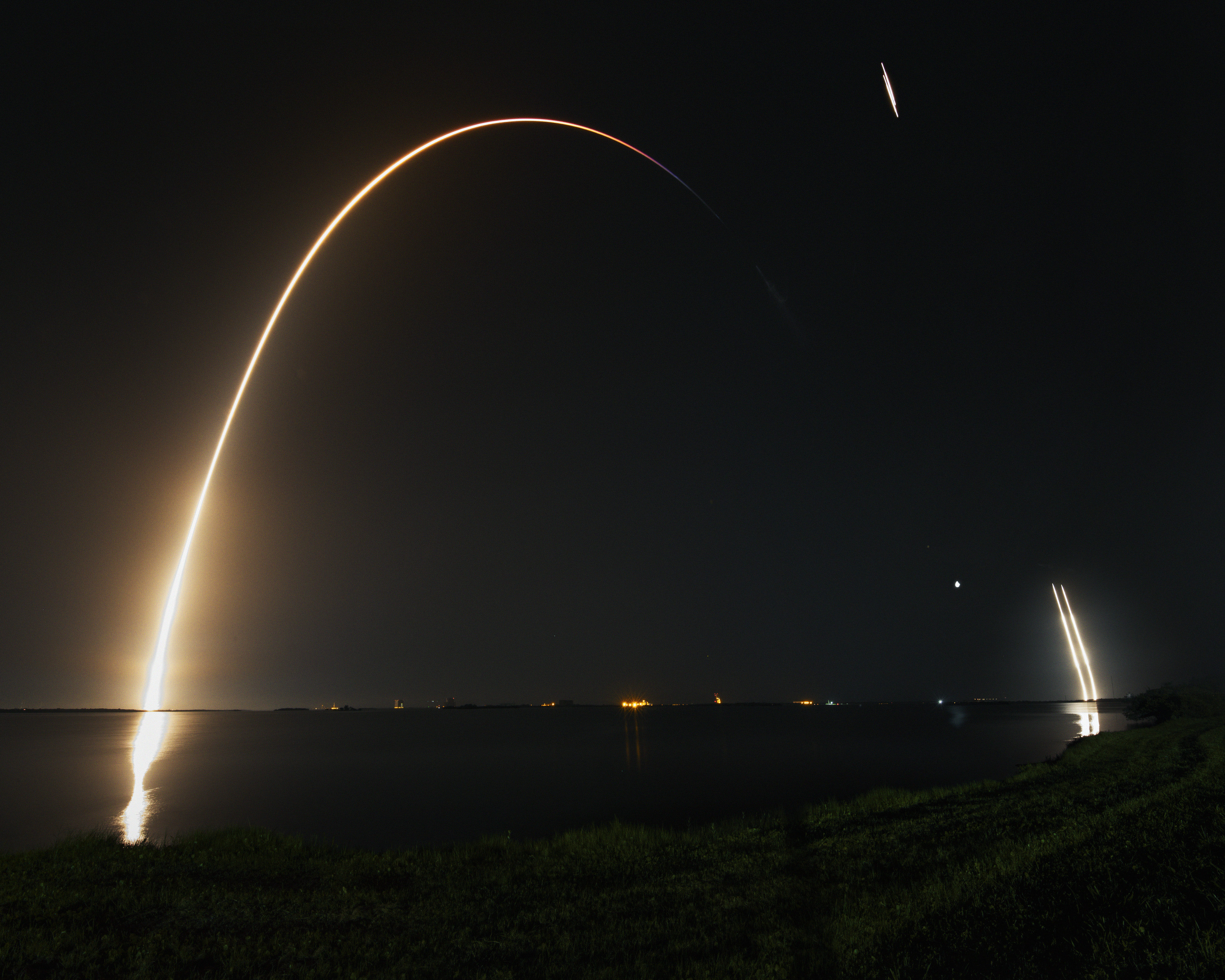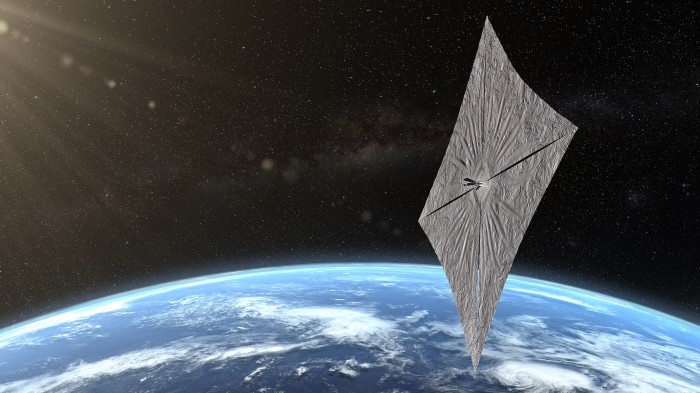SpaceX’s latest Falcon launch has put a solar sail into orbit

LightSail-2’s large reflective sails will unfurl in approximately a week, capturing the momentum of light from the sun and using that to propel the spacecraft.
The news: SpaceX successfully launched its Falcon Heavy rocket at 2:30 a.m. US Eastern time today from the Kennedy Space Center in Florida. It’s the third mission for the rocket, which is the largest in the world. It carried 24 satellites for the US Defense Department and other customers.
It transported several new pieces of equipment for NASA, the most interesting being a deep-space atomic clock, which would allow spacecraft to find their way using their own in-built systems. It’s also carrying the cremated remains of 152 people on behalf of memorial spaceflight company Celestis.

Time to shine: Most exciting, the mission is carrying the LightSail-2 cubesat satellite. The Planetary Society has been waiting for a decade to launch its crowd-funded solar sail.
The aim is to reach 450 miles above Earth, and then orbit for about a year. Engineers on the ground will be able to steer it by adjusting the angle of the sails, just like on a boat. But instead of using the wind to move, the solar sail will use the energy of photons as they strike its gigantic mylar sails to move. The sails will unfurl sometime next week.

First proposed by Carl Sagan in the 1970s, solar sails have long been the stuff of science fiction, including works by Arthur C. Clarke and Jules Verne. They have been mooted as a potential technology for interstellar travel, as they can theoretically build up to incredible speeds over time.
A sting in the tail: Reusable rockets are at the core of SpaceX’s business model, and this launch was the first time the US Defense Department has permitted its hardware to be launched on a used rocket.
Although the Falcon Heavy’s twin boosters landed intact on Cape Canaveral, the rocket’s central booster failed to land on a drone ship, missing its target and exploding into the water. It’s the second time this has happened, and SpaceX had warned this return would be particularly challenging because the booster returned to the platform at such high speed.
Deep Dive
Space
How to safely watch and photograph the total solar eclipse
The solar eclipse this Monday, April 8, will be visible to millions. Here’s how to make the most of your experience.
How scientists are using quantum squeezing to push the limits of their sensors
Fuzziness may rule the quantum realm, but it can be manipulated to our advantage.
The race to fix space-weather forecasting before next big solar storm hits
Solar activity can knock satellites off track, raising the risk of collisions. Scientists are hoping improved atmospheric models will help.
Stay connected
Get the latest updates from
MIT Technology Review
Discover special offers, top stories, upcoming events, and more.